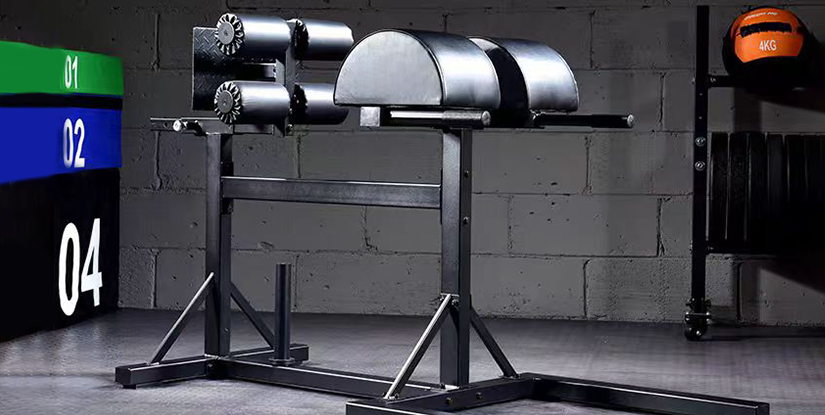One-Arm Lat Pulldown Guide – Technique, Benefits & Programming

One-Arm Lat Pulldown: Precision Back Development
The one-arm lat pulldown is a unilateral pulling exercise that targets the latissimus dorsi while improving muscular balance, core stability, and mind-muscle connection. Unlike bilateral pulldowns, the single-arm variant isolates each side, helping identify and correct strength asymmetries and enhancing functional pulling mechanics for athletes and general trainees alike.
Primary Benefits
- Targets the latissimus dorsi with increased isolation and range of motion.
- Corrects left-right strength imbalances and reduces compensatory patterns.
- Enhances scapular control and thoracic stability.
- Improves grip endurance and unilateral core engagement.
Muscles Targeted
- Primary: Latissimus dorsi (lats)
- Secondary: Teres major, posterior deltoid, biceps brachii, forearms
- Stabilizers: Rhomboids, lower trapezius, obliques and erector spinae
Equipment and Setup
Use a cable machine with a single handle attachment (D-handle or rope). Adjust the knee pads for a stable seated position. Select a load that allows 8–15 controlled repetitions with strict technique. Position the pulley above head height so the handle starts at full arm extension.
Execution: Step-by-Step
- 1. Sit upright with feet flat and knees anchored under pads.
- 2. Reach up with one hand and grasp the handle; allow the shoulder to hang briefly to set initial stretch.
- 3. Retract the scapula by pulling the elbow down and back, maintaining a slight lean but keeping the torso stable.
- 4. Pull until the elbow passes the torso or the handle reaches chest level; focus on driving the elbow rather than bending the wrist.
- 5. Pause 0.5–1 second at peak contraction, emphasizing a full lat squeeze.
- 6. Slowly return to full extension under control, resisting the cable to maintain tension.
- 7. Complete desired reps, then switch sides. Aim for symmetry in reps and perceived effort.
Coaching Cues
- “Drive the elbow down and back” — prioritize elbow path to recruit lats.
- “Lead with the elbow, not the hand” — reduces forearm dominance and wrist action.
- “Short and controlled” — avoid using momentum or trunk jerking.
- “Feel the lat” — slow tempo to enhance mind-muscle connection.
Common Errors and Corrections
- Using torso swing: Reduce load and brace the core; limit trunk movement to maintain unilateral loading.
- Relying on biceps: Focus on initiating the pull from the shoulder blade and elbow.
- Shrugging the shoulder: Depress the scapula before the pull to activate lower lats and traps.
- Incomplete range of motion: Control both concentric and eccentric phases for full muscle tension.
Programming and Progressions
Include one-arm lat pulldowns 1–3 times per week depending on volume demand. Typical prescriptions:
- Strength: 4–6 sets of 4–8 reps (heavier load, longer rest).
- Hypertrophy: 3–4 sets of 8–12 reps (moderate load, moderate rest).
- Endurance/technique: 2–3 sets of 12–15+ reps (lighter load, short rest).
Progress by increasing load, improving tempo control, or adding isometric holds at peak contraction. Pair with bilateral rows and compound pulls for balanced back development.
Variations and Alternatives
- Standing single-arm cable pulldown — increases core demand.
- One-arm dumbbell row — similar unilateral focus with different loading plane.
- Single-arm assisted pull-up or banded lat pulldown — suitable for beginners.
- Neutral-grip one-arm pulldown — reduces shoulder strain for some lifters.
Safety Considerations
Maintain a neutral spine and avoid excessive lumbar flexion or rotation. Reduce load if scapular control or shoulder pain occurs. Consult a professional if you have a history of shoulder instability, rotator cuff issues, or acute back pain.
Maintenance and Gym Care
Inspect cable attachments regularly for wear and ensure the handle is secure. Wipe equipment after use and follow gym-specific maintenance protocols to minimize injury risk.
Frequently Asked Questions (简洁)
Q: Is one-arm lat pulldown better than two-arm? A: It complements bilateral work by correcting imbalances; neither is strictly better.
Q: How many sets should I perform? A: 2–4 sets based on goals: more for hypertrophy, fewer for strength focus.
Q: Can beginners do this exercise? A: Yes, start with light resistance or bands and focus on technique.
Q: Will this help my pull-up? A: Yes, it strengthens lats and unilateral pulling mechanics transferable to pull-ups.
Q: How do I fix shoulder discomfort? A: Lower load, check scapular control, and consult a clinician if pain persists.
Q: Should reps be equal each side? A: Aim for balanced reps and load; adjust extra sets for weaker side if needed.
Q: Can I superset with rows? A: Yes, pairing with rowing movements improves overall back thickness and balance.
Q: What grip is best? A: Neutral or single-handle grips are common; choose what feels stable and pain-free.
Q: Any tempo recommendations? A: 2:1:2 (eccentric:isometric:concentric) encourages control and hypertrophy.

